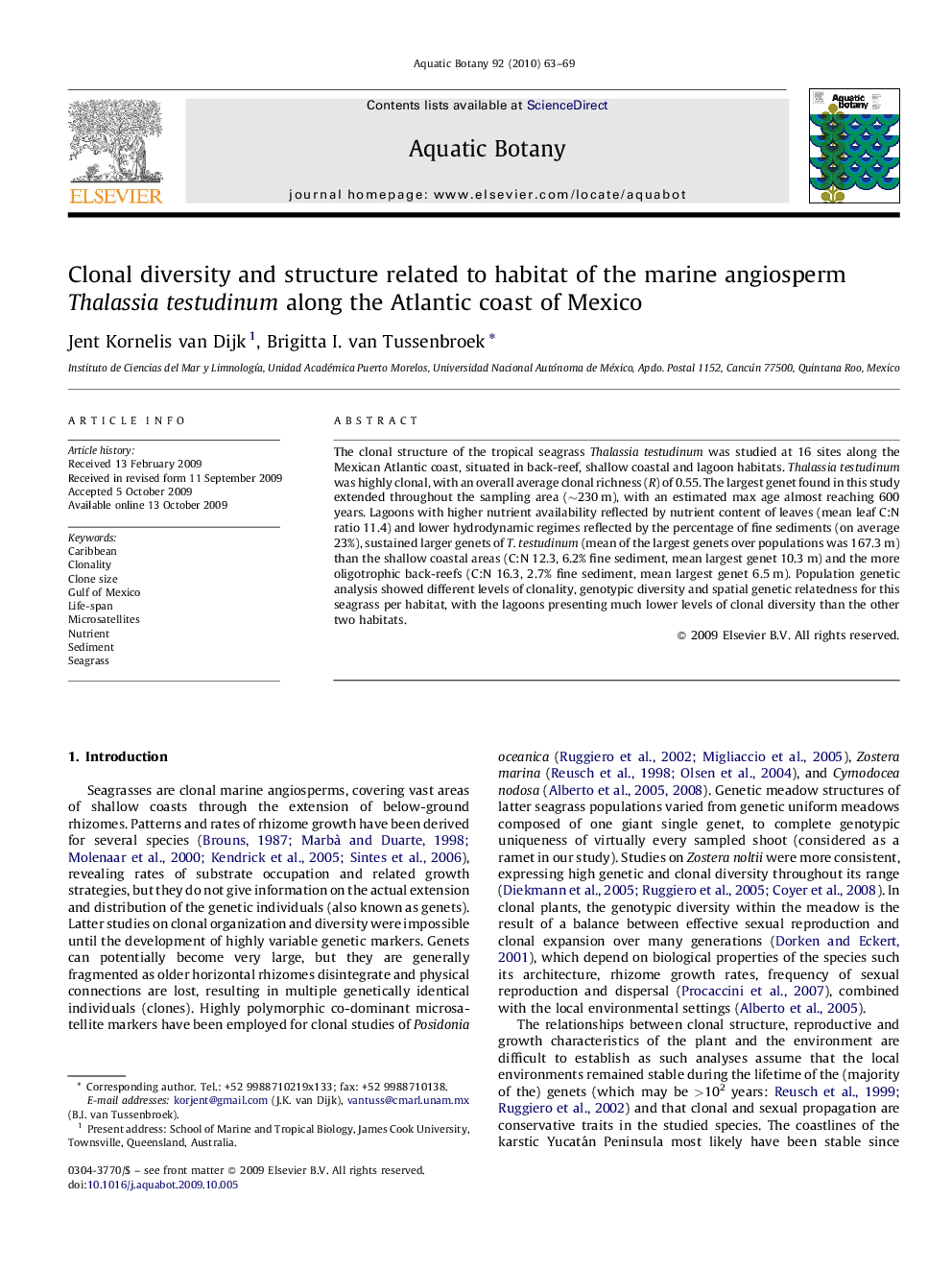| Article ID | Journal | Published Year | Pages | File Type |
|---|---|---|---|---|
| 4528361 | Aquatic Botany | 2010 | 7 Pages |
Abstract
The clonal structure of the tropical seagrass Thalassia testudinum was studied at 16 sites along the Mexican Atlantic coast, situated in back-reef, shallow coastal and lagoon habitats. Thalassia testudinum was highly clonal, with an overall average clonal richness (R) of 0.55. The largest genet found in this study extended throughout the sampling area (â¼230Â m), with an estimated max age almost reaching 600 years. Lagoons with higher nutrient availability reflected by nutrient content of leaves (mean leaf C:N ratio 11.4) and lower hydrodynamic regimes reflected by the percentage of fine sediments (on average 23%), sustained larger genets of T. testudinum (mean of the largest genets over populations was 167.3Â m) than the shallow coastal areas (C:N 12.3, 6.2% fine sediment, mean largest genet 10.3Â m) and the more oligotrophic back-reefs (C:N 16.3, 2.7% fine sediment, mean largest genet 6.5Â m). Population genetic analysis showed different levels of clonality, genotypic diversity and spatial genetic relatedness for this seagrass per habitat, with the lagoons presenting much lower levels of clonal diversity than the other two habitats.
Related Topics
Life Sciences
Agricultural and Biological Sciences
Aquatic Science
Authors
Jent Kornelis van Dijk, Brigitta I. van Tussenbroek,
